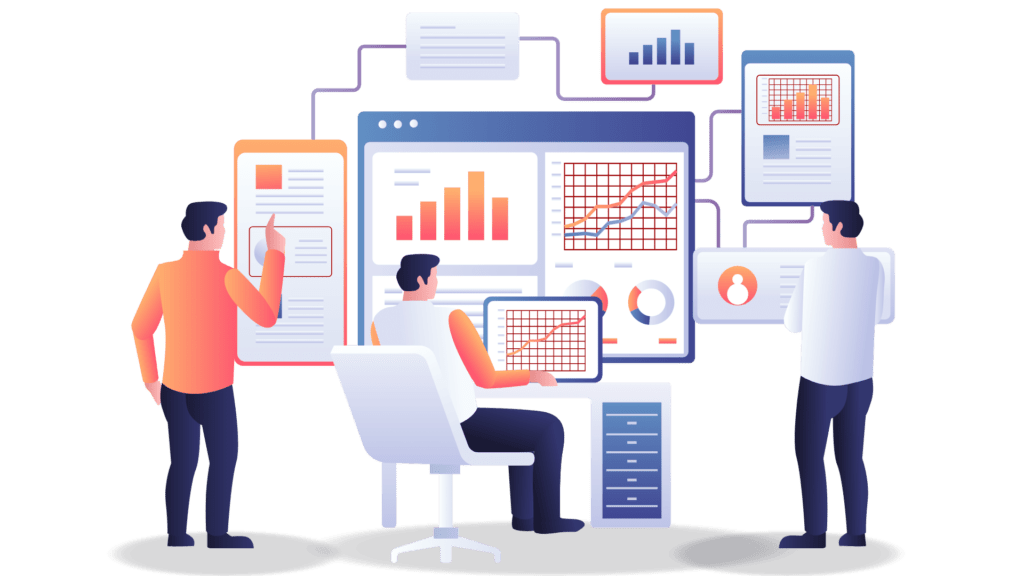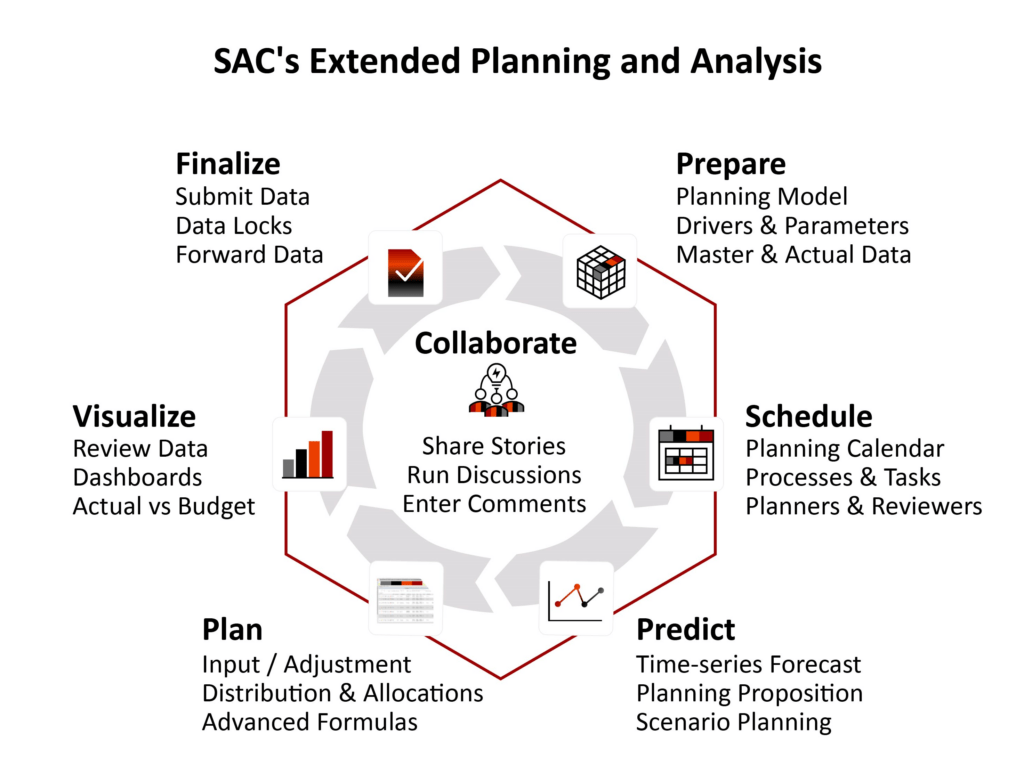Here we go with the last blog of the series. But willing to know what the previous blog was!!
Let me just give you the gist of it. The previous blog, SAP AI Core: Sound-Based Predictive Maintenance, entirely focused on a use case: sustainable smart factory applications and their high-level architecture and benefits. Here is the link!!
Let’s get back on track with our new blog. Picture a situation where your team works together seamlessly and anticipates issues before they happen that’s possible using Enterprise planning with SAP Analytics Cloud model.
What if sustainability reduced expenses and environmental impact and was more than just a catchphrase for your company’s strategy? A well-organized cooperative approach creates a win-win situation by easing the maintenance burden and opening doors to sustainable practices.
Why and how?
Planning for sustainability and maintenance costs is essential for long-term success. They guarantee effective resource utilization, reduce unforeseen costs, and promote environmental sustainability.
For a sustainable future, proactive planning protects resources, fosters resilience, and ties companies to ethical standards.
Regular asset assessments, predictive maintenance plans, and the incorporation of environmentally friendly practices are all part of its implementation.
To ensure long-term success, invest in energy-efficient solutions, use technology for real-time monitoring, and promote a culture of responsible resource management.
Let’s take a quick look at their key requirements.
Maintenance Cost
- Effective planning tools.
- Integrate the master data of key objects from the ERP system.
- Generate plan data based on history.
- Multi-user support.
- Provide a what-if analysis and simulation.
Sustainability Planning
- Plan and report on CO2 emissions, energy consumption, energy rate, and production.
- Predict the energy rate based on historical data.
- Show the key factors behind the sustainability KPI.
- Allow users to see the impact of changes in the key factors on the sustainability KPIs.
- Provide holistic reporting on the actual and planned values of the sustainability KPI.
Modelling Enterprise Planning with SAP Analytics Cloud
Using the SAP Analytics Cloud (SAC) to implement maintenance cost and sustainability planning requires a methodical approach that includes data preparation, integration, analysis, visualization, and administration.
- Data Preparation:
Start by gathering and classifying pertinent data. This comprises previous maintenance expenses, energy usage, and additional sustainability indicators. Make sure the data is accurate by cleaning the dataset and resolving inconsistencies.
- Data Integration:
Combine information from multiple sources, including maintenance logs, financial data, and environmental performance indicators, into SAC by integrating diverse datasets. The seamless integration made possible by SAP Analytics Cloud guarantees a comprehensive picture of the performance of your business.
- Analysis:
To conduct a thorough analysis, make use of SAC’s analytical powers. Examine maintenance cost trends and sustainability metrics for patterns, correlations, and outliers.
- Visualization:
To effectively communicate findings, create eye-catching visualizations. SAC provides users with simple-to-use tools for creating interactive charts and dashboards, which facilitates stakeholders’ understanding of the intricate connections between sustainability performance and maintenance costs.
- Administration:
Make sure the SAC platform is efficiently administered. Configure access control, create data governance procedures, and assign roles and permissions to users. To preserve the security and integrity of the data-driven insights produced by SAC, this step is essential.
Through the adoption of these steps in the SAP Analytics Cloud, organizations can efficiently model sustainability planning and maintenance costs.
Extended Planning and Analytics
SAC also supports Extended Planning and Analytics and involves the below-mentioned steps:
- Prepare:
This involves planning the model structure in SAP Analytics Cloud. Define drivers and parameters influencing maintenance costs and sustainability. Establish master data for accurate insights and effective model execution.
- Schedule:
Utilize SAP Analytics Cloud to plan for sustainability and maintenance costs. To improve organizational sustainability, use planning calendars, specify tasks and processes, and effectively involve planners and reviewers.
- Predict:
Proposals for strategic planning, scenario planning, and predictive time-series forecasting can all be done with SAP Analytics Cloud. Make use of its features to inform decisions, make accurate predictions, and develop flexible strategies.
- Plan:
For a thorough approach to maintenance cost and sustainability modelling, use SAP Analytics Cloud’s sophisticated formulas, allocate resources effectively, and adjust inputs for accuracy.
- Visualize:
Examine information, make budgetary and actual comparisons, and build dynamic dashboards to improve decision-making and provide insights into sustainability and maintenance costs.
- Finalize:
Complete by sending ready-to-use data, putting data locks in place to ensure integrity, and sending data to SAP Analytics Cloud without interruption. This guarantees precise insights and expedites planning for sustainability and maintenance costs.
The process is streamlined by SAC’s capabilities, which offer a complete solution to improve sustainability performance, lower expenses, and optimize maintenance practices.
Conclusion
As we come to the end of our journey in optimizing your company’s maintenance costs and sustainability planning, picture a time when decisions are driven by insights and sustainability is a reality rather than just an aspiration. SAP Analytics Cloud turns into your beacon of light, showing you the way to effectiveness and ethical behaviour.
But why end there?
Imagine your company going through a digital revolution with KaarTech, where innovation and experience combine to create a dynamic force for success and sustainability.
We have experience with more than 3200 SAP projects, and we have successfully implemented SAP Analytics Cloud for 22+ customers globally.
The SAP Analytics Cloud’s flawless integration, painstaking analysis, and visual brilliance are just a few examples of what KaarTech can provide. As you conclude your investigation, let KaarTech be the impetus for your digital revolution and dare to dream bigger.
FAQ’s
How does SAP contribute to streamlined enterprise planning processes?
SAP streamlines enterprise planning by providing robust tools for data integration, real-time analytics, and collaborative decision-making, fostering efficiency, accuracy, and adaptability in planning processes across diverse business functions.
What role does SAC play in enhancing enterprise planning efficiency?
SAP Analytics Cloud (SAC) elevates enterprise planning efficiency through its intuitive interface, real-time data insights, collaborative features, and seamless integration, empowering organizations to make informed decisions and optimize their strategies effectively.
How does SAC support real-time data analysis in enterprise planning scenarios?
SAP Analytics Cloud (SAC) enables real-time data analysis in enterprise planning by connecting to live data sources, facilitating instant updates, dynamic modelling, and interactive visualizations for agile decision-making and planning adjustments.
What support and maintenance options are offered by SAP in enterprise planning?
SAP provides comprehensive support and maintenance services for enterprise planning, including regular updates, dedicated customer support, and a range of resources to ensure optimal system performance and user satisfaction.



